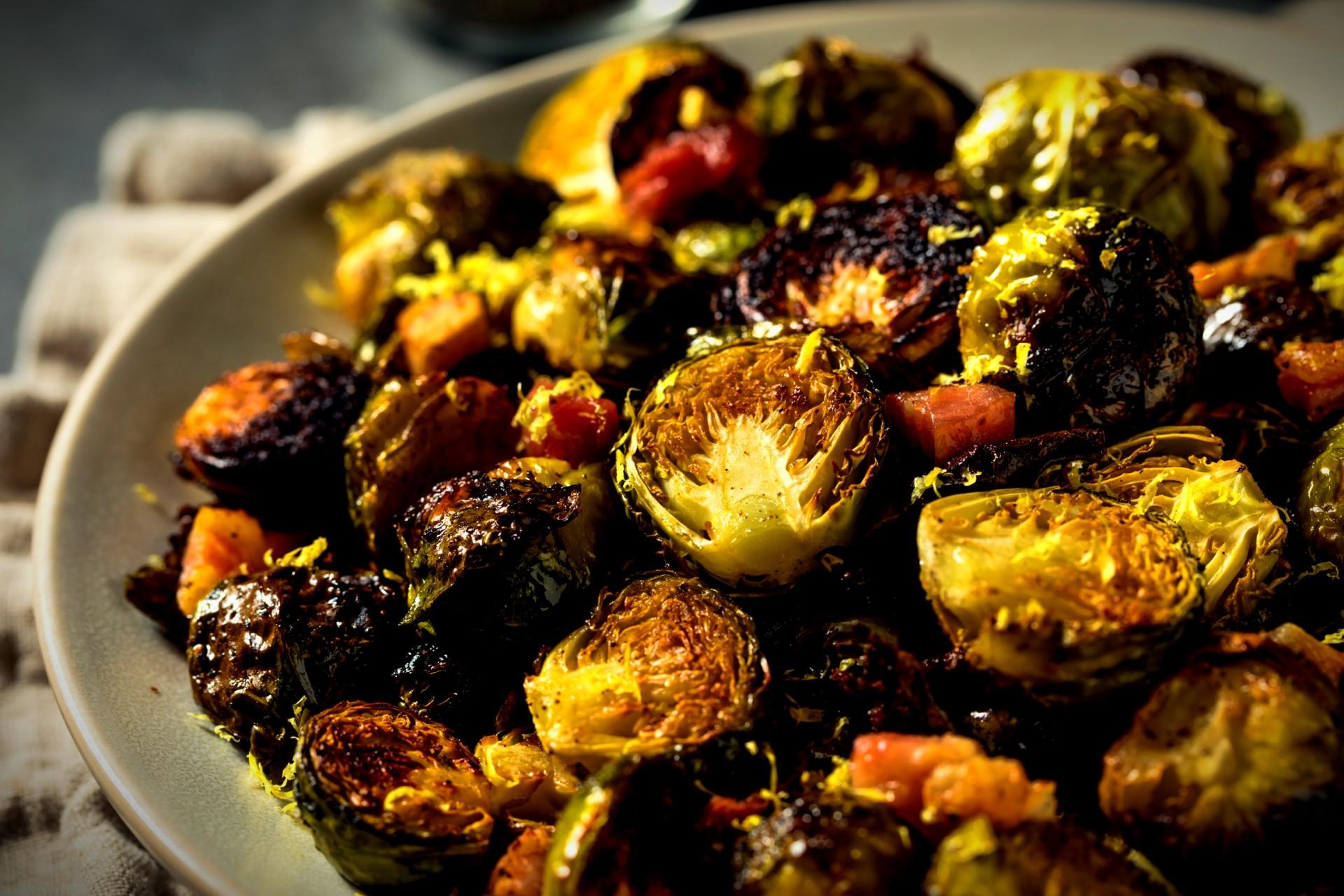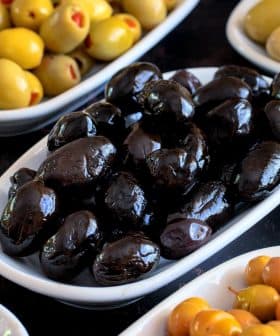Thanksgiving with a Tuscan Twist
Extra virgin olive oil enhances classic Thanksgiving dishes, adding new flavor dimensions and lightening up the butter-soaked holiday.
Thanksgiving is the second favorite holiday in the United States, and is often associated with consuming high-calorie meals with family and friends. One way to make Thanksgiving meals healthier is by incorporating extra virgin olive oil into dishes, such as turkey, side dishes, and desserts, providing both health benefits and flavor enhancements. However, it is important to experiment with olive oil in recipes prior to Thanksgiving to ensure a successful and stress-free holiday meal.
Thanksgiving in the United States heralds the start of the holiday season. According to some polling, the holiday is Americans’ second favorite, right after Christmas.
Thanksgiving is typically associated with over-indulging in fatty, salty and sweet foods with family and friends. By some estimates, Americans consume between 2,500 and 4,500 calories at the meal.
Health-conscious consumers might look for ways to make America’s favorite meal a bit healthier but without taking away indulgent flavors.
See Also:Pouring on the Olive Oil for ThanksgivingOne of the best ways to do this is to incorporate extra virgin olive oil into a range of dishes, from the quintessential turkey to side dishes and desserts.
Along with the health benefits derived from its phenolic compounds and wide range of flavor profiles, extra virgin olive oil fits into many common dietary restrictions, including Kosher, vegan, dairy-free, gluten-free and keto.
“I am cooking for my business partners and their families, which are about 20 people, but with one condition: it will be a ‘Tuscan Thanksgiving,’ ” Rolando Beramendi, a cookbook author and the founder of Manicaretti Italian Food Importers, told Olive Oil Times.
“I’m making the meal with ingredients from the American tradition but in a traditional way of cooking from Tuscany,” he added.
Turkey
Thanksgiving’s hallmark food is easily enhanced with extra virgin olive oil. Olive oil’s chemical stability when exposed to high temperatures for extended periods makes it perfect for baking turkeys.
For those following traditional recipes, use a flavor injector to inject a medium-intensity extra virgin olive oil right into the breast meat for a juicier texture and additional flavor.

For those without an injector at hand, gently lift the skin of the turkey and rub olive oil on the breast meat. Coating the entire bird in olive oil for the last 30 minutes of baking results in crisp, brown skin.
Nancy Harmon Jenkins, a food journalist and author of Virgin Territory: Exploring the World of Olive Oil, admitted that she was not overly enthusiastic about turkey (befittingly, the Maine native prefers lobster dressed in olive oil).
However, she told us the best turkey she ever had was deep-fried in extra virgin olive oil, although deep-frying turkey at 360 ºF (180 ºC) requires a significant volume of extra virgin olive oil and a setup to do it safely.
For those looking to try something a bit different, Beramendi has an option for what he called a Tuscan-inspired turkey.
He recommends deboning the breasts while leaving the skin intact. Next, stack the breasts on top of each other with the fatty parts facing up and down.
“And in the middle, you put branches of rosemary and sage, some salt and herbs,” he said. “Then you tie it up, so it becomes like a nice roll, and you sear it in olive oil and get a nice and crispy on the outside.”
After, he recommends pouring whole milk or heavy whipping cream to cover the seared breasts, then adding some bay leaf, rosemary branches and pepper kernels before bringing the mixture to a boil and allowing it to simmer for 45 minutes.
“The turkey gets nice and cooked but stays very pink and juicy in the middle,” he said. After the turkey is boiled, the last step is to put it in the oven and allow it to bake for the rest of the way.
“As part of the basting process, drizzle some olive oil on the turkey,” he said. “Turkey doesn’t have that much fat in the first place, so using more olive oil in the process would be quite nice.”
Once it has come out of the oven, Beramendi recommends using robust extra virgin olive oil on the turkey instead of the traditional gravy to lighten up the meal and provide a new dimension of flavor.
The side dishes
While extra virgin olive oil can transform the traditional Thanksgiving turkey, its use is certainly not limited to the main course.
From traditional vegetable medleys to mashed potatoes, extra virgin olive oil can enhance a wide range of side dishes at the Thanksgiving table.
For those unanointed to cooking with olive oil, Jenkins recommends starting with something simple, such as a salad with fresh extra virgin olive oil.
“Start by insisting on a salad being part of the meal,” she said. “That is not a tradition at all, but it should be. If you’re timid about olive oil, that’s the best place to start.”
Jenkins also recommends serving raw vegetables with a robust extra virgin olive oil for dipping or olive oil-based dipping sauce while all the guests arrive and the main courses are still being prepared.
Jenkins said she would be joined by several vegetarian family members and maintains that olive oil is a necessary part of any vegetarian diet. “It adds the kind of depth of flavor that meat does without adding meat to it,” she said.

As a result, Jenkins recommends preparing a range of vegetable-based dishes using extra virgin olive oil, including roasted carrots, brassica, Brussels sprouts, cauliflower and broccoli rabe.
Along with turkey, mashed potatoes are another classic Thanksgiving dish easily enhanced with extra virgin olive oil. If possible, Beramendi recommends splurging on an Olio Nuovo, which gives the mashed potatoes a fluorescent green color.
See Also:Roasted Potatoes with Garlic, Lemon, and Cilantro (Batata Hara)“Just boil the potatoes, put them through a ricer very quickly and add the Olio Nuovo and nutmeg,” he said, adding that the result is a flavorful, rich and dairy-free dish.
Beramendi also plans to give the traditional pumpkin and squash-based dishes a Tuscan twist.
“Of course, you need pumpkin,” he said. “So I’m going to make a Tortelli di Zucca — little ravioli made with pumpkin pureé — and I am going to serve them with olive oil and sage. Inside the pumpkin pureé, I will put a little amaretti cookies for texture.”
Dessert
Along with the rest of the meal, olive oils can play a transformative role in preparing desserts.
For example, drizzle extra virgin olive oil on top of ice cream or gelato for a Tuscan twist on an American classic or get a bit more creative and attempt an olive oil-inspired cake.
However, Jenkins said that incorporating olive oil into a traditional pumpkin or apple pie is a bit more complicated. “The big problem, of course, is that olive oil is a liquid, and butter is solid, so they react differently,” she said.
See Also:Salted Rosemary and Olive Oil Ice CreamFor those adventurous enough to attempt to make an olive oil-inspired pie crust, Jenkins warns against looking for straight substitutions online, as these tend to vary significantly.
“I kind of go with the feeling of the batter more than anything,” she said. “The other thing about butter is that you can beat it to a real froth, especially with an egg and sugar, and it’s very hard to do that with olive oil because it collapses very quickly.”
“So you have to keep that in mind,” Jenkins added. “And perhaps put more leavening in [the pie crust] than you would with butter to make up for that.”
Instead, Jenkins recommends preparing moisture cake using extra virgin olive oil. “I’d much rather have a cake made with olive oil than one made with butter,” she said. “It stands to reason because olive oil is a liquid.”
For Thanksgiving, Jenkins plans to bake a cake inspired by her great aunt, who passed down a traditional apple cake recipe.

“She had a recipe for a traditional Maine apple cake made with a lot of chopped fresh apples and walnuts in it,” she said. “She would never have used olive oil because it wasn’t a part of her kitchen, but I make that cake with olive oil, and I maintain it’s a much better cake with olive oil than it is made with butter.”
Be creative, but know your limits
Extra virgin olive oil can enhance just about any Thanksgiving dish. However, Jenkins warns that the holiday can be stressful enough without trying an overly elaborate recipe.
“I would recommend to people that they start with a recipe that’s written for olive oil rather than trying to take a favorite cake that’s made with butter and convert to olive oil and get a sense over a period of time of what olive oil does in a cake batter,” she said. “And then, look up these equivalencies and start experimenting.”
“I certainly wouldn’t start on Thanksgiving because you’ve got enough to worry about without having to worry about whether you’ve got the right amount of olive oil in your butter cake,” Jenkins concluded. “Make it simple for yourself. That’s the most important thing.”
Share this article









